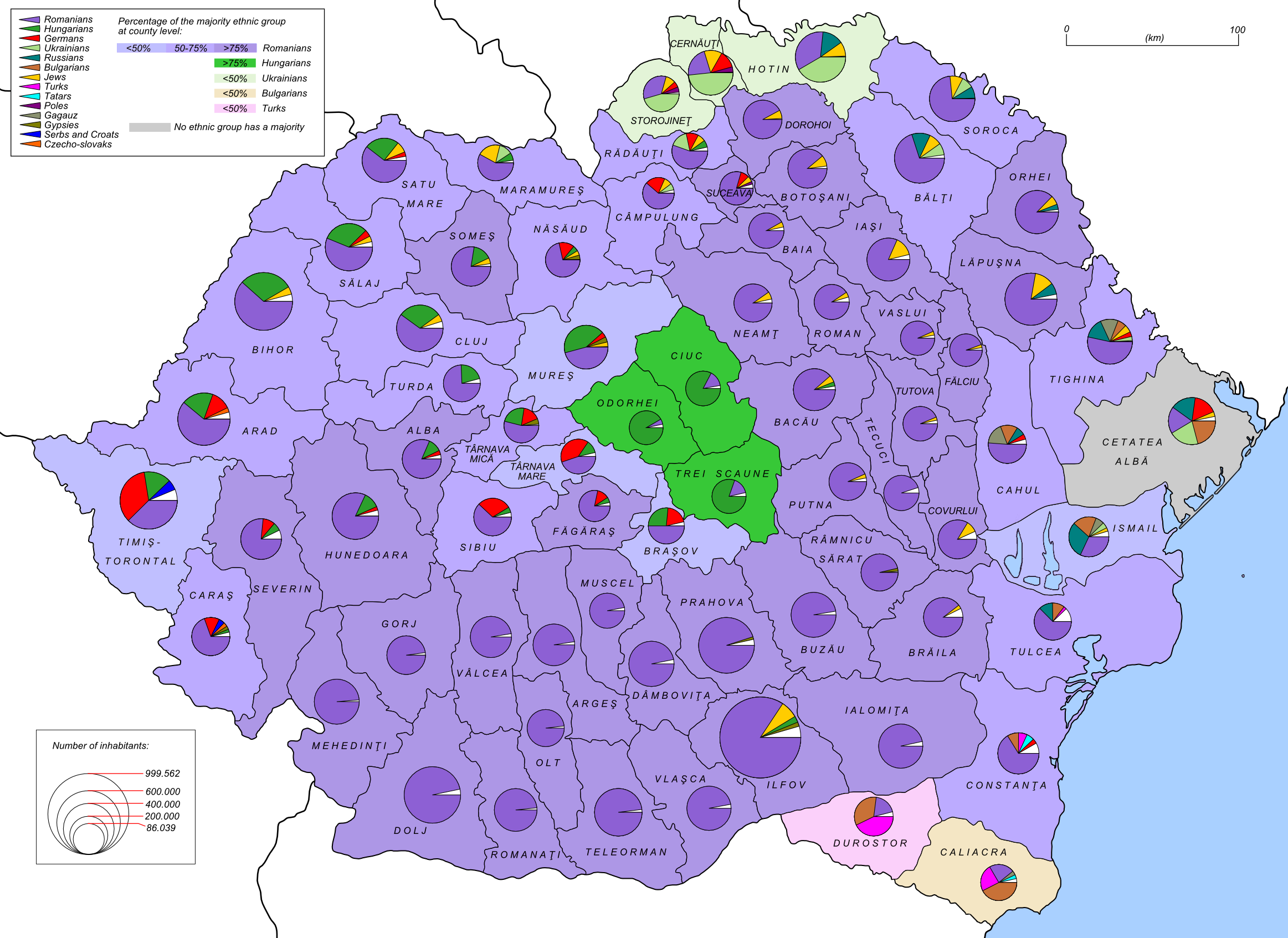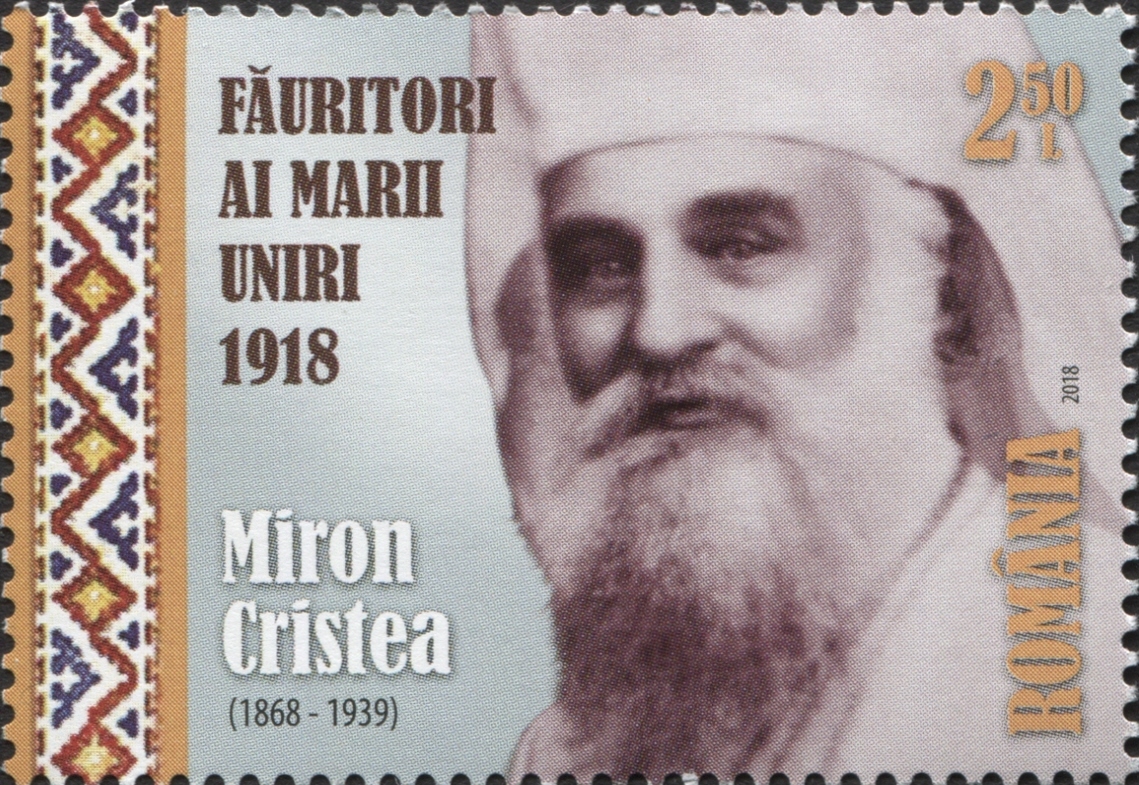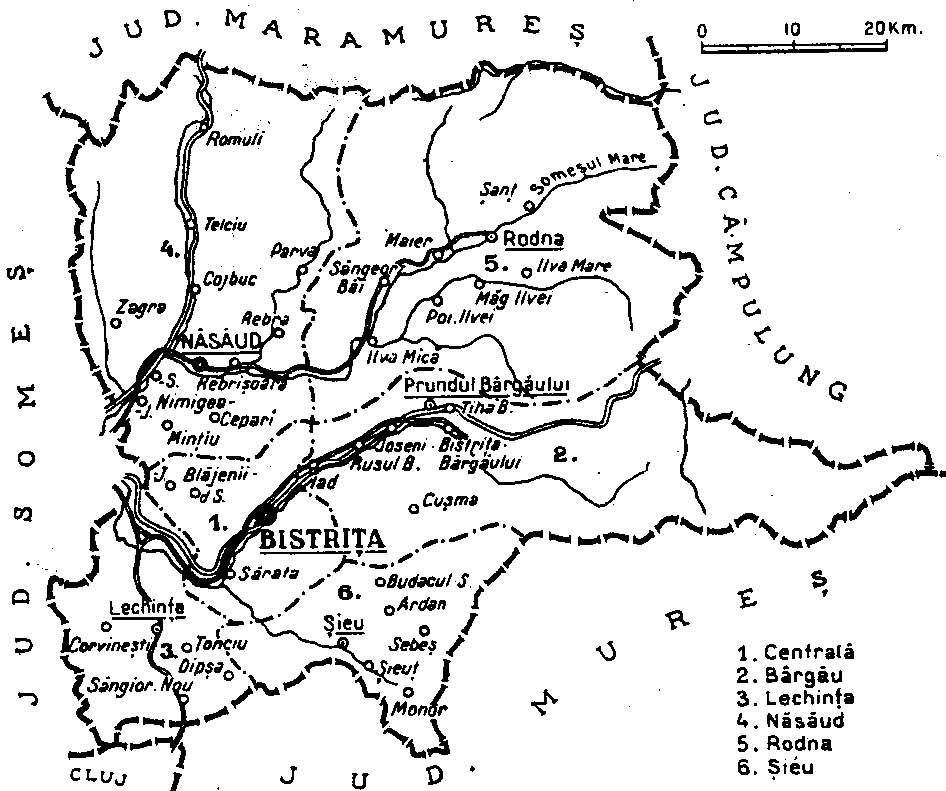|
Ioan Dumitrache
Ioan Dumitrache (25 August 1889 – 6 March 1977) was a Romanian major general during World War II, in command of the 2nd Mountain Division. His troops (''vânători de munte'') were recognized as the elite troops of the Romanian Army throughout the campaign on the Eastern Front. He was a recipient of the Knight's Cross of the Iron Cross of Nazi Germany, awarded to him for capturing Nalchik on November 2, 1942. Biography Early life He was born in Ciorăști in 1889, in what was then Râmnicu Sărat County (now Vrancea County), in the Muntenia region of Romania, the son of Gheorghe and Ioana Dumitrache. He attended the gymnasium in Râmnicu Sărat and the Alexandru Ioan Cuza High School in Focșani. In 1909 he was admitted to the Military School of Infantry Officers in Bucharest, from which he graduated in 1911 with the rank of second lieutenant. In 1913 he participated in the Second Balkan War, and was promoted to lieutenant in 1914. World War I and the interwar After Romania ... [...More Info...] [...Related Items...] OR: [Wikipedia] [Google] [Baidu] |
Ciorăști
Ciorăști is a commune located in Vrancea County, Romania. It is composed of seven villages: Ciorăști, Codrești, Mihălceni, Salcia Nouă, Salcia Veche, Satu Nou, and Spătăreasa. The commune is located at the southeastern extremity of the county, on the banks of the river Râmnicul Sărat. Natives *Ioan Dumitrache Ioan Dumitrache (25 August 1889 – 6 March 1977) was a Romanian major general during World War II, in command of the 2nd Mountain Division. His troops (''vânători de munte'') were recognized as the elite troops of the Romanian Army throughout ... (1889–1977), a major general during World War II, in command of the 2nd Mountain Division. References Communes in Vrancea County Localities in Muntenia {{Vrancea-geo-stub ... [...More Info...] [...Related Items...] OR: [Wikipedia] [Google] [Baidu] |
Kuban Bridgehead
The Kuban Bridgehead (), also known as the "Goth's head position" (), was a German military position on the Taman Peninsula, Russia, between the Sea of Azov and the Black Sea. Existing from January to October 1943, the bridgehead formed after the Germans were pushed out of the Caucasus. The heavily fortified position was intended as a staging area for the ''Wehrmacht'' which was to be used to renew attacks towards the oil wells of the Caucasus. Axis positions in the bridgehead were repeatedly subjected to large Soviet offensives, but none ever comprehensively broke the Axis defensive lines. The bridgehead was abandoned when the Red Army breached the Panther–Wotan line, forcing an evacuation of the German forces across the Kerch Strait to Crimea. Prelude Case Blue (''Fall Blau''), launched 28 June 1942, saw Army Group South divided into two Army Groups, Army Group A and Army Group B, the former participating in the Battle of the Caucasus. Throughout the operation the German si ... [...More Info...] [...Related Items...] OR: [Wikipedia] [Google] [Baidu] |
Evenimentul Zilei
''Evenimentul Zilei'' is a formerly physical and now exclusively online newspaper in Romania. Its name translates to "The event of the day" or "Today's event". History and profile ''Evenimentul Zilei'' was founded by Ion Cristoiu, Cornel Nistorescu, and , and the first issue was published on 22 June 1992.Media Index. Evenimentul Zilei Euro Topics. Retrieved 6 December 2013 Ion Cristoiu, one of the 3 founders of the newspaper, was also its first director, but he is currently columnist at the same newspaper The newspaper reached its peak daily circulation of 675,000 in 1993. In 1997 chief editor Ion Cristoiu quit and this job was taken by Cornel Nistorescu. The newspaper was purchased along with its parent company Publishing in 1998 by the German company |
Romania In World War II
The Kingdom of Romania, under the rule of King Carol II, initially maintained neutrality in World War II. However, fascist political forces, especially the Iron Guard, rose in popularity and power, urging an alliance with Nazi Germany and its allies. As the military fortunes of Romania's two main guarantors of territorial integrity—France and Britain—crumbled in the Battle of France, the government of Romania turned to Germany in hopes of a similar guarantee, unaware that Germany, in the supplementary protocol to the 1939 Molotov–Ribbentrop Pact, had already granted its blessing to Soviet claims on Romanian territory. In the summer of 1940, the USSR occupied Bessarabia and Northern Bukovina, severely weakening Romania and diminishing its international standing. Taking advantage of the situation, Hungary and Bulgaria both pressed territorial claims on Romania. The disputes, arbitrated by Germany and Italy, led to the further losses of Northern Transylvania and Southern ... [...More Info...] [...Related Items...] OR: [Wikipedia] [Google] [Baidu] |
Vânători De Munte
The ''vânători de munte'' (, ) are the elite mountain troops of the Romanian Land Forces. They were first established as an independent Army Corps in 1916 during World War I, and became operational in 1917 under ''Corpul de Munte'' designation. History Origins and World War I In 1883, the Mountain Artillery was formed with one battery assigned to each of the four Army Corps. In 1913 and 1915, two divizions of Mountain Artillery were formed, each with 4 batteries. These were further integrated into the 1st Mountain Artillery Regiment in 1916, with the headquarters in Târgu Jiu. Another 8 batteries were added to the Regiment before Romania's entry in World War I. Despite several initiatives starting in 1889, the first mountain troops were formed in November 1916. Through Order no. 294, the Military School of Skiing was transformed in the "Corps of Mountain Hunters" (''Corpul Vânătorilor de munte''). It was organized in three battalions, each with three companies. In Januar ... [...More Info...] [...Related Items...] OR: [Wikipedia] [Google] [Baidu] |
Patriarch Miron Of Romania
Miron Cristea (; monastic name of Elie Cristea ; 20 July 1868 – 6 March 1939) was a Romanian cleric and politician. A bishop in Hungarian-ruled Transylvania, Cristea was elected Metropolitan-Primate of the Orthodox Church of the newly unified Greater Romania in 1919. As the Church was raised to a rank of Patriarchate, Miron Cristea was enthroned as the first Patriarch of the Romanian Orthodox Church in 1925. In 1938, after Carol II banned political parties and established a royal dictatorship, he chose Cristea to be Prime Minister of Romania, a position in which he served for about a year (between 11 February 1938 and his death on 6 March 1939). Biography Early life Born in Toplița to Gheorghe and Domnița Cristea,Gheorghe Iancu"Membrii transilvăneni ai Academiei Române (sesiunea 1919)" in ''Anuarul Institutului de Istorie "George Bariţiu"'', Editura Academiei Române, 2007, ISSN 1584-4390 p. 73 a peasant family,"Patriarch Cristea of Rumania dies", ''New York Times'' ... [...More Info...] [...Related Items...] OR: [Wikipedia] [Google] [Baidu] |
Năsăud County
Năsăud County is one of the historic counties of Transylvania, Romania. The county seat was Bistrița. Geography Năsăud County was located in the north-central part of Greater Romania, in the north of Transylvania, covering . Currently, the territory that comprised Năsăud County is mostly included in the Bistrița-Năsăud County, while its eastern part belongs now to Suceava County. In the interwar period, the county was bordered on the south by Mureș County and a small part of Cluj County, to the west by Someș County, to the north by Maramureș County, and to the east by the counties of Câmpulung and Neamț. History The territory of Năsăud County was ceded to Romania by Hungary, as successor state to Austria-Hungary in the Treaty of Trianon (1920). Prior to then, the territory formed Beszterce-Naszód County in the Kingdom of Hungary. Romanian authorities established the county in 1925. In 1938, the county was disestablished and incorporated into the newly formed ... [...More Info...] [...Related Items...] OR: [Wikipedia] [Google] [Baidu] |
Prefect (Romania)
A prefect () in Romania represents the Government in each of the country's 41 counties, as well as the Municipality of Bucharest. History The office traces its origin to the '' ispravnici'' who held office in the Danubian Principalities before these united in 1859. Two laws of 1864 introduced the office of prefect into the new Romanian state, modelled on the French equivalent. Another law was enacted in 1872, while an 1883 law reduced the prefect's role to executing Government decisions. The office was strengthened by law in 1892; it was provided that "at the head of each county there is a prefect...named by royal decree, upon the recommendation of the Minister of the Interior...he represents the executive power in the entire district placed under his administration". The 1925 law for administrative unity regarded the prefect as the representative of the central authorities, with power to control local officials. Named by royal decree following a recommendation of the Interior Mi ... [...More Info...] [...Related Items...] OR: [Wikipedia] [Google] [Baidu] |
Carol I National Defence University
The Carol I National Defence University () is an institution of higher education, located in Bucharest, Romania. It was established in 1889 by Ștefan Fălcoianu under the name Higher War School. In 2005, it was renamed in honor of the Romanian King Carol I Carol I or Charles I of Romania (born Karl Eitel Friedrich Zephyrinus Ludwig von Hohenzollern-Sigmaringen; 20 April 1839 – ), was the monarch of Romania from 1866 to his death in 1914, ruling as Prince (''Domnitor'') from 1866 to 1881, and as .... The universities motto is "Great labor overcomes everything." The Carol I National Defence University seeks to train military and civilian experts in security and national defense. It undertakes scientific studies related to these matters when requested by relevant state authorities. The university is a member of the International Association for Military Pedagogy (IAMP), whose members include military and civilian professionals from military institutions of advanced learning ... [...More Info...] [...Related Items...] OR: [Wikipedia] [Google] [Baidu] |
Knight's Cross Of The Iron Cross
The Knight's Cross of the Iron Cross (), or simply the Knight's Cross (), and its variants, were the highest awards in the military and paramilitary forces of Nazi Germany during World War II. While it was order of precedence, lower in precedence than the Grand Cross of the Iron Cross#1939 Grand Cross, Grand Cross of the Iron Cross, the Grand Cross was never awarded at-large to Nazi German military and paramilitary forces. The Grand Cross's sole award was made to ''Reichsmarschall'' Hermann Göring in September 1939, making the Knight's Cross (specifically, the Knight's Cross of the Iron Cross#Grades, Knight's Cross with Golden Oak Leaves, Swords, and Diamonds grade) the ''de facto'' highest award among the Orders, decorations, and medals of Nazi Germany, decorations of Nazi Germany. The Knight's Cross was awarded for a wide range of reasons and across all ranks, from a senior commander for skilled leadership of his troops in battle to a low-ranking soldier for a single act of ... [...More Info...] [...Related Items...] OR: [Wikipedia] [Google] [Baidu] |
Order Of Michael The Brave
The Order of Michael the Brave () is Romania's highest military decoration, instituted by King of Romania, King Ferdinand I of Romania, Ferdinand I during the early stages of the Romanian Campaign (World War I), Romanian Campaign of the World War I, First World War, and was again awarded in the World War II, Second World War. The Order, which may be bestowed either on an individual or on a whole unit, was named in honor of Michael the Brave (''Mihai Viteazul''), the late 16th-century Prince of Wallachia, Principality of Transylvania (1570–1711), Transylvania, and Moldavia. Data : Requirements: Awarded to officers only for exceptional deeds on the battlefield. It is the highest ranking Romanian military order. : Classes: 3rd, 2nd and 1st : Date Instituted: September 26, 1916 : Number awarded: 2184 :: ''During WW1:'' ::: 1st class: 16 ::: 2nd class: 12 ::: 3rd class: 336 (of which 43 awarded to military units) :: ''During WW2:'' ::: 1st class: 15 ::: 2nd class: 76 (of which 13 award ... [...More Info...] [...Related Items...] OR: [Wikipedia] [Google] [Baidu] |





